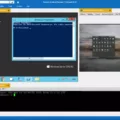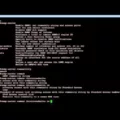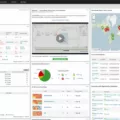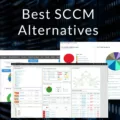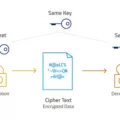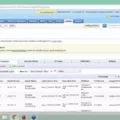Remote Monitoring and Management (RMM) software has become increasingly important for IT service providers to maintain and support their clients’ IT infrastructure and systems. RMM software is used to monitor the performance of endpoints, such as computers, tablets, smartphones, and other IT assets remotely from a single device. With RMM software, IT service providers can remotely access devices, deploy patches, review actions taken, monitor systems, and more.
RMM tools provide a range of features that makes it easier for IT service providers to manage their clients’ networks. For example, they can detect any hardware or software issues with endpoints in real time and take appropriate action quickly to prevent any disruption in the system. Additionally, they allow service providers to set up automated alerts that can notify administrators of system performance issues before they become serious problems. Furthermore, RMM software enables IT professionals to remotely access devices on the network while securely protecting corporate data with encryption and authentication protocols.
End-to-end observability is another key benefit of using RMM software. This means that every console, metric, and measurement needed to enhance user experience as well as budgeting and administrator productivity is available at all times. It also allows for proactive monitoring which can detect problems before they occur so that solutions can be implemented quickly without any disruption in services.
It’s important to note that RMM tools should not be confused with Mobile Device Management (MDM) solutions which are used for secure access from mobile devices like smartphones and tablets. While they both have similar functions in terms of monitoring performance and providing remote access capabilities, RMM solutions are designed specifically for managing endpoints across an entire network while MDM solutions are tailored toward mobile devices only.
Remote Monitoring and Management (RMM) software offers a range of features that makes it easier for IT service providers to maintain their clients’ networks remotely with minimal disruption in services or downtime due to unexpected system issues. With end-to-end observability capabilities offered by RMM tools combined with automated alerts and secure remote access capabilities powered by encryption protocols; this technology provides an efficient way for businesses to manage their networks effectively without compromising corporate data security or user experience.
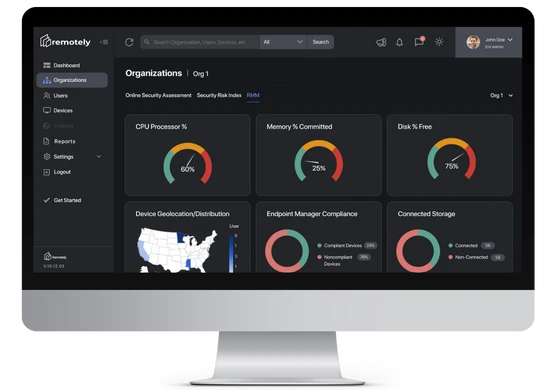
What Are the Benefits of Using RMM Software?
RMM software is an essential tool for IT service providers, allowing them to monitor and manage their client’s IT infrastructure and systems remotely. It provides a central hub from which IT services can be managed, including monitoring the performance of hardware and software, providing patch management, tracking system changes, creating reports, and protecting against security threats. RMM software can also help automate tasks such as deploying applications or making configuration changes across multiple systems with a single command. Ultimately, RMM software helps IT service providers save time and resources by streamlining the process of managing their clients’ networks.
Does Microsoft Offer an RMM Solution?
Yes, Microsoft Azure offers a native Remote Monitoring and Management (RMM) software solution. This powerful tool provides users with comprehensive end-to-end observability, allowing them to monitor and manage their IT infrastructure and applications. With the Azure RMM, users can collect detailed performance data from across their environment, as well as gain insights into application and system health. The tool also features advanced alerting capabilities that trigger notifications when key performance metrics are exceeded or deviate from expected values. Additionally, the Azure RMM includes automated scripting capabilities for quickly deploying changes across multiple machines in one go. This makes it easy to deploy new applications or perform maintenance activities across an entire network in one go, saving time and effort for administrators.
The Benefits of RMM and MDM
RMM (Remote Monitoring and Management) is a type of software that allows IT service providers to remotely monitor, manage and troubleshoot their clients’ networks, systems and devices from a central location. It usually includes features such as system monitoring, patch management, hardware and software inventory tracking, remote control for desktops and servers, backup management, and more.
MDM (Mobile Device Management) is a way of managing mobile devices such as smartphones and tablets used by employees or customers across an organization. It provides secure access to corporate information while ensuring that data remains confidential. MDM typically includes features such as the over-the-air configuration of devices, application distribution, security policy enforcement, device tracking, and remote lock/wipe capabilities.
Is TeamViewer an RMM Tool?
Yes, TeamViewer is an RMM (Remote Monitoring and Management) tool. With TeamViewer, you will be able to centrally monitor and manage your entire IT infrastructure remotely. It allows you to gain visibility into all aspects of your IT environment, including system availability, performance, security, and patch management. In addition, it features advanced automation capabilities such as alerting, automated tasks, and reporting. All of these features make TeamViewer an ideal tool for quickly responding to incidents and optimizing the overall performance of your IT environment.
Comparing the Best Remote Monitoring and Management Solutions
The best RMM software depends on the size and needs of your business. For small businesses, NinjaOne (formerly NinjaRMM) is a great option. It offers easy-to-use solutions for automating common IT tasks like patching, monitoring, and more. Atera is another popular choice for small businesses, offering an intuitive platform for managing multiple devices from one dashboard. For larger businesses, GoTo Resolve (formerly GoToAssist) and Central are great options. Microsoft Intune is also a robust RMM solution that allows you to track your entire IT infrastructure from one central location. ManageEngine Endpoint Central is another great option for large enterprises, with features such as remote control and user access management. Action1 is also an excellent choice that’s easy to use even for non-technical users. Finally, Addigy provides a comprehensive suite of tools for managing Apple devices in the cloud or on-premise. Ultimately, the best RMM software will depend on your specific needs and budget.
Is Azure a Remote Monitoring and Management Tool?
Yes, Azure is an RMM (Remote Monitoring and Management) solution. It provides real-time insights into the performance of your IT infrastructure and is designed to help you manage and monitor your virtual machines, networks, and applications. With Azure Network Watcher, IT specialists can capture packets from the network to get a detailed understanding of how their environment is running. In addition, they can set alerts to stay informed about any changes or issues that may arise. This makes it easier for IT teams to quickly respond to problems and keep their systems running smoothly.
Do I Need RMM Software?
Yes, RMM software is an important tool for businesses that rely on their networks to stay productive. It allows technicians to quickly and securely access computers and servers for maintenance and troubleshooting, reducing the risk of data loss or security breaches. Additionally, many MSPs (Managed Service Providers) require their customers to use RMM software in order to provide remote support services. This ensures that the customer’s network is well-maintained and secure. Ultimately, RMM software provides businesses with a comprehensive view of their network health, allowing them to make informed decisions regarding the performance, security, and maintenance of their IT infrastructure.
The Benefits of Using Microsoft RMM
Microsoft RMM is a comprehensive Remote Monitoring and Management (RMM) software solution designed to provide businesses with proactive monitoring, automated patch management, and easy-to-use remote support tools. It helps IT professionals quickly identify, diagnose, and resolve IT issues from anywhere in the world. Microsoft RMM helps keep systems up to date with automated patch management, allowing for quick vulnerability resolution. Additionally, it enables real-time monitoring of networks and provides detailed analytics on system performance and usage trends. With remote access capabilities, Microsoft RMM makes it possible for IT professionals to quickly troubleshoot problems or make changes remotely without having to be physically present at the customer’s site. This can help reduce downtime while ensuring that critical services are available whenever they are needed.
The Safety of RMM Software
RMM software is generally considered safe, but there are certain risks associated with using it. As with any other type of software, RMM software must be properly configured and regularly updated to ensure that it is secure. Additionally, user credentials and access permissions should be carefully managed to ensure that only authorized personnel have access to the system. It’s also important to keep in mind that since RMM software interacts with other systems on a network, it can be vulnerable to attack if not properly secured. Therefore, it’s crucial that MSPs take the necessary steps to secure their RMM systems and protect their clients’ data.
Conclusion
In conclusion, RMM software is an invaluable asset to IT service providers, providing a comprehensive platform to monitor and manage their client’s IT infrastructure and systems. It offers features such as remote monitoring, patch deployment, access control, and performance assessments. Furthermore, RMM software can be used in conjunction with MDM programs to provide secure access to corporate information from mobile devices. With these capabilities in place, organizations can maintain efficient operations and reduce costs associated with IT management.

